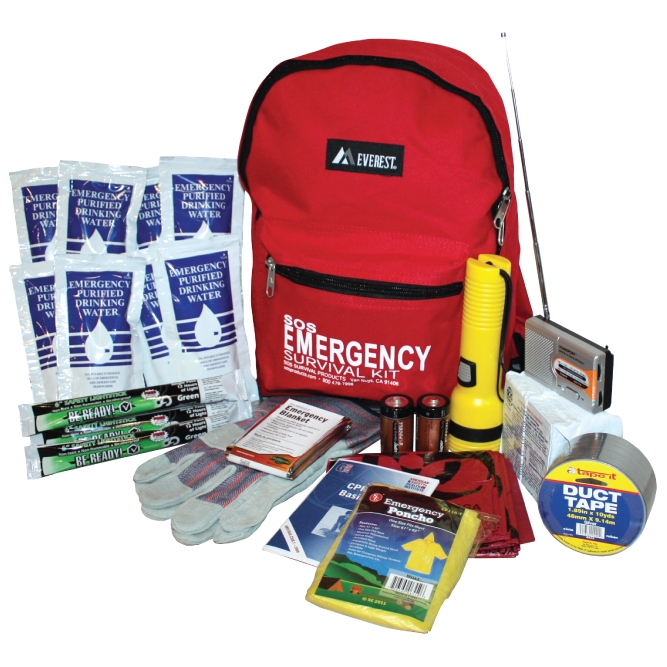Emergency Preparedness: Structure a Safer, Stronger Area With Each Other
Emergency Preparedness: Structure a Safer, Stronger Area With Each Other
Blog Article
How to Create a Comprehensive Emergency Preparedness Strategy
In the world of readiness, developing a detailed emergency situation strategy is not merely a task to mark off a listing; it is an important keystone of any type of company or person's resilience approach. From natural calamities to unforeseen crises, the capability to expect, alleviate, and respond successfully can mean the difference in between chaos and control. By carefully crafting a strategy that addresses numerous aspects of emergency management, consisting of risk assessment, communication protocols, resource allowance, and calculated decision-making, one can lay a strong foundation for guarding lives, operations, and assets. The real effectiveness of such a plan exists not just in its creation yet likewise in its ongoing upkeep and adaptation to progressing dangers and difficulties.
Significance of Emergency Readiness
Emergency readiness is vital for reducing prospective threats and ensuring the security of communities and people. In today's world, where natural calamities, public health situations, and other emergency situations can strike without caution, being prepared can make a significant distinction in lessening the effect of these events. By having a well-thought-out emergency situation readiness plan in location, people and organizations can react efficiently, protect lives, and lower property damage.
One of the main reasons why emergency readiness is crucial is its role in saving lives. When emergencies happen, having a plan that details clear treatments for interaction, discharge, and emergency situation reaction can assist individuals act promptly and emphatically. This can protect against injuries and deaths by ensuring that individuals recognize what steps to require to remain risk-free
In addition, emergency readiness boosts the durability of communities. By cultivating a culture of preparedness and preparation for numerous situations, communities can jump back faster from interruptions and calamities. This strength is important for preserving security, connection of procedures, and total well-being when faced with misfortune.
Assessing Possible Threats
Thinking about the importance of being gotten ready for unforeseen events, the initial action in developing an effective emergency readiness strategy entails completely reviewing and assessing potential risks. This assessment calls for a comprehensive review of all possible hazards that might influence the company, taking into consideration aspects such as place, market, and historical data on incidents. By identifying these risks, companies can prioritize their readiness efforts and assign resources efficiently to mitigate one of the most substantial hazards.
Usual threats that organizations may face include natural disasters like earthquakes, floodings, or storms, technological hazards such as power blackouts or information breaches, as well as human-caused risks like accidents or deliberate acts of physical violence. Carrying out a risk analysis also entails taking into consideration the potential influence of these events on the company's operations, staff members, clients, and reputation. By performing a detailed danger analysis, organizations can create tailored emergency situation reaction strategies that address their details vulnerabilities and make certain efficient readiness for any type of potential dilemma.
Developing a Communication Strategy
Creating a thorough and clear communication plan is essential for efficient emergency situation preparedness within companies. In times of situation, communication plays an essential role in making sure the safety and wellness of staff members, stakeholders, and the community. A well-balanced communication plan should detail clear lines of interaction, designate essential employees in charge of interaction tasks, and develop procedures for distributing information swiftly and properly.
One trick facet of developing an interaction strategy is determining key and alternate communication channels (EMERGENCY PREPAREDNESS). These can include email, text messaging, phone trees, social media platforms, and public address systems. It is critical to ensure that these channels are reputable, easily accessible, and routinely checked to ensure their efficiency throughout emergency situations

Structure an Emergency Set
Provided the crucial importance of readiness in times of crisis, an essential part that organizations must attend to is the establishment of an emergency package. When constructing an emergency package, it is vital to consider the certain needs and scenarios of the organization. Furthermore, companies ought to consist of vital papers, such as contact lists, insurance policy information, and emergency feedback plans, in water resistant containers within the package.
Establishing Emptying Treatments
To ensure the security and organized discharge of workers throughout emergency situations, organizations need to establish clear and efficient evacuation procedures. Emptying treatments ought to encompass a variety of possible scenarios, consisting of fires, natural disasters, or various other emergencies that need swift discharge.

In addition, organizations need to establish a system for bookkeeping for all workers throughout an evacuation to make sure that every person has safely left the properties. Communication plays an important function in discharge treatments, with clear instructions on how to evacuate and when to do so. Routine testimonial and upgrading of evacuation procedures based upon responses and transforming scenarios are vital to preserving the performance of the strategy.
Conclusion
To conclude, establishing a comprehensive emergency situation readiness strategy is crucial for guaranteeing the security and wellness of individuals in the event of a catastrophe (EMERGENCY PREPAREDNESS). By examining prospective dangers, producing an interaction plan, building an emergency situation package, and developing discharge organizations, individuals and procedures can be much better outfitted to react effectively to emergencies. It is essential to prioritize preparedness efforts to alleviate the impact of catastrophes and secure lives and property
In the realm of readiness, creating a thorough emergency situation plan is not simply a task to check off a checklist; it is a vital keystone of any type of organization or individual's strength method. When emergencies occur, having a strategy that describes clear treatments original site for communication, emergency situation, and evacuation action can help individuals act quickly and emphatically. why not try these out. By conducting a thorough danger analysis, organizations can establish customized emergency reaction strategies that resolve their particular susceptabilities and make certain effective preparedness for any prospective dilemma
Establishing a clear and detailed interaction plan is necessary for efficient emergency situation preparedness within organizations. By assessing potential risks, developing an interaction strategy, developing an emergency kit, and establishing evacuation organizations, procedures and individuals can be better geared up to respond effectively to emergencies.
Report this page